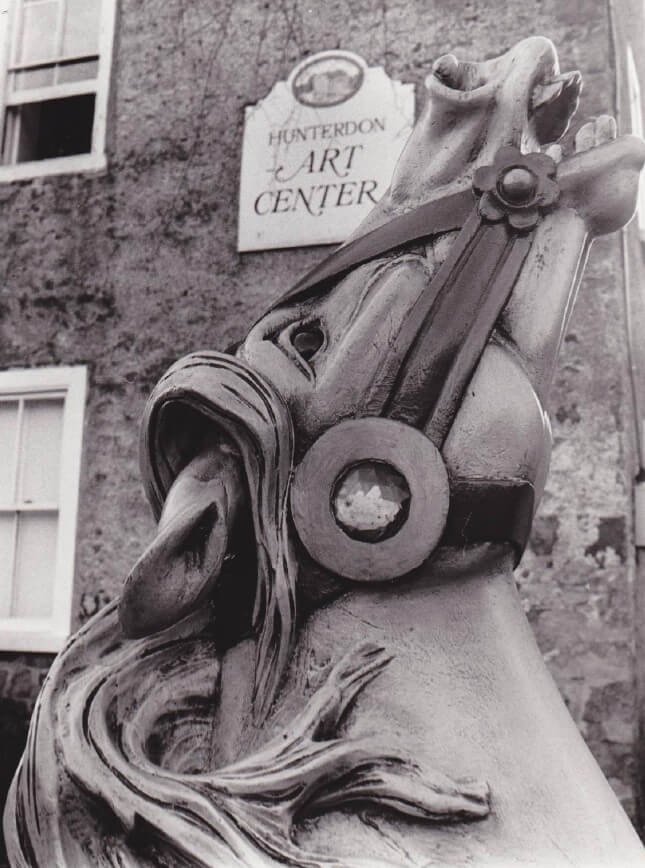Architect William M. Hunt of Lambertville worked closely with the trustees to save as much of the mill’s historic character as possible. He drew up plans for the renovated spaces in 1953, including areas for a stage, kitchen, stairway, and public amenities. Under the presidency of Otto Siegmund, who assumed leadership of the trustees after James R. Marsh’s death in 1966, important changes were instituted at the Art Center. A grant from the New Jersey State Council on the Arts made it possible for the center to hire its first executive director, Ann Douglass, in 1970. A new board committee for special exhibitions was organized, including ceramic artist Toshiko Takaezu, whose work was seminal to 20th-century ceramics, illustrator Gertrude Espencheid, and illustrator and artist Katharine Trubek. The Special Exhibitions Committee organized at least two shows a year. Among the exhibitions were solo shows of the works of Lenore Tawney (1970), Tetsuro Sawada (1971), Sergio Campos Mello (1971), Hedda Sterne (1973), and John Vickery (1974).
There were also intriguing group exhibitions—among them an Invitational Sculpture exhibition included Harry Bertoia, Jeanne Miles, Isamu Noguchi, and James Seawright. In 1972 Samuel Dorsky, an important dealer and philanthropist, donated a selection of twentieth-century prints to the Art Center. Such well-known artists as Salvador Dali, Red Grooms, Philip Guston, Louise Nevelson, Ad Reinhardt, and George Sugarman greatly enhanced the center’s collection..





